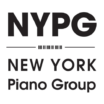
Active in the northern California region, pianist Jason Sia performs regularly as a recitalist, chamber musician and a collaborative pianist. His engagements include solo recitals at the “Music at Noon” Concert Series at Westminster Presbyterian Church in Sacramento, the “1st & 3rd Thursdays” Series at the Haggin Museum in Stockton, the Trinity Chamber Concert Series at the Trinity United Methodist Church in Berkeley, the Manteca Kindred Arts Concert Association at the St. Paul United Methodist Church in Manteca, the Arden Christian Church Concert Series, the “St James Concert Series”at St. James Episcopal Church in Sonora, the “Performances at Pioneer” Concert Series at Pioneer Congregational United Church of Christ, the “Music On The Divide” Concert Series in Georgetown, and the Crocker Art Museum Classical Concert Series. Internationally, he has appeared as a soloist with the Hong Kong Sinfonietta and the Manila Chamber Orchestra.
He started his piano studies at the age of 6 and received his formal musical education at the San Francisco Conservatory of Music, and at the Aspen Music School and Festival in Colorado. He further earned his Bachelor and Master Degrees in Piano Performance at California State University, Sacramento, under the tutelage of Dr. Gene Savage and Dr. Lorna Peters, graduating cum laude.
"My childhood is first filled with memories of them playing Fur Elise, Liebestraum, and Claire de Lune when I was a kid."
I see that you’re based in California. How is the classical music scene in Northern California?
The classical music scene is very vibrant. The closer one gets to San Francisco, the opportunities grow in terms of the variety of live music that is available. But the Sacramento Valley and the Gold Country of the Sierra Nevada Mountains have music series and concerts to keep a music lover busy. For example, Stockton, Sacramento, Yuba City, Georgetown, Manteca, and Sonora are all places that have live classical concerts, or concert series for all types of music. And it is common for each concert series to have a variety of types of music for the season.
Can you tell us about your musical training? How did you get started with piano? Did you grow up in a musical household?
I was fortunate that my mother Cynthia and my aunt Rita were decent amateur pianists. My childhood is first filled with memories of them playing Fur Elise, Liebestraum, and Claire de Lune when I was a kid. Then when my siblings and I were old enough to take lessons, I would use their lesson time on occasion for longer lessons. Eventually, my skill at home was sufficient that my father Bernard would ask me to play pieces from his LP collection, a favorite pianist of his was Van Cliburn.
As for my musical training, I started taking lessons since I was six years old. From then I continued taking lessons and classes, eventually receiving a Masters of Music in Piano Performance from California State University, Sacramento.
My journey to that point though, took me to San Francisco Conservatory of Music, the Aspen Music Festival and School, and all of these experiences exposed me with a variety of teachers, guest artists, and masterclass teachers.
Do you currently have a favorite composer whose compositions you like to play more than others? Any favorite pianists?
I like to play Chopin the most, because his music is expressive and poetic. It is amazing how his works have a timeless beauty that generation after generation, has come to appreciate. I have found that Arthur Rubinstein, Vladimir Horowitz, and Van Cliburn have provided some of the most expressive recordings that inspire me to make beautiful music.
Can you tell us about your current recital program? What inspired you to come up with this program?
My program for Carnegie Hall is about an hour and forty five minutes with a 15 minute intermission. This will be a solo piano program that includes beloved masterworks that make the heart fill with love of music. In deciding my program for Carnegie Hall, I started with a question, “What would some of the earliest memories of piano repertoire be for some of my audience members?” In general, I imagined people who listened to their parents playing the piano, or pieces they practiced when they were taking piano lessons. That led me to including pieces like Claire de Lune, Barcarolle, “Moonlight” Sonata and Hungarian Rhapsody No.2. These pieces are memorable and have the potential to be played so expressively that it brings a person back to a wonderful memory.
The inspiration for this program, like my other programs is a desire to connect my audience with the music through expression that helps them feel the music in a meaningful way.
You are performing at Carnegie Hall in June. Is this your first time performing there?
This is my second time performing at Carnegie Hall. My first performance was while in college in the 90’s. It was so joyous to make beautiful music at a place that is so revered and filled with great history. I knew I was on the right path to focus on music. I set a goal for myself to come back and play again at Carnegie Hall after college was done.
How do you feel about performing in New York City? Do you have any expectations?
I am very excited to perform at Carnegie Hall. I’m expecting it will be a wonderful trip and all of the people will be happy to hear the music. While performing I am hoping that Carnegie Hall’s beautiful acoustics will help create an experience that touches the soul.
How do you prepare for a solo recital? Can you take us through your process of getting a recital program concert ready?
For me, preparation began many years ago in learning about 80 main pieces in my repertoire. These pieces are the ones that can convey a personal connection with fans of classical music. I regularly rotate the pieces in and out for different programs; however, I try to keep a routine to practice my main pieces regularly.
In preparing for a solo recital as the concert date comes closer, I focus on getting something done every day. Most days, I practice the pieces for the coming program to ensure that I will be able to deliver a performance that is expressive and vibrant. I work very slowly and thoughtfully in practicing each piece so that a solid foundation is built upon.
If you had a chance to travel back in time, which musical period would you like to travel back in time to and who would you like to meet? Please explain why you would like to meet this person.
Interestingly, I would like to travel to the time around George Gershwin’s life, because I’m fascinated about how he arrived to a thriving musical scene. At that time, Romantic and Impressionistic music were the most popular and Gershwin worked in those styles and he helped develop jazz music. It is also very interesting that he traveled to Europe, and influenced Ravel’s two piano concertos to have a rich jazzy sound. Finally, I have had many audience members that will come up after a concert and want to talk about the Gershwin pieces that were played. The audience has a connection with him and his works, which is difficult to identify with other composers. His entire body of works – musicals, popular songs, classical works like Rhapsody in Blue, An American in Paris, and his opera Porgy and Bess are all very popular, and well loved.
Do you have any current or future project you would like to share?
I do have additional concerts planned. After a rest from my coming recital at Carnegie Hall, I will have a concert at the Crocker Art Museum here in Sacramento and at other concert series in Northern California. After that, I am planning another East coast concert at the Kennedy Center for the Performing Arts in 2020, as well as the Lincoln Center and the Kaufman Music Center there in New York City in 2022.
Jason Sia performs on Thursday, June 21, 2018 at Carnegie Hall. For tickets, click here. For more information, visit his website here.

